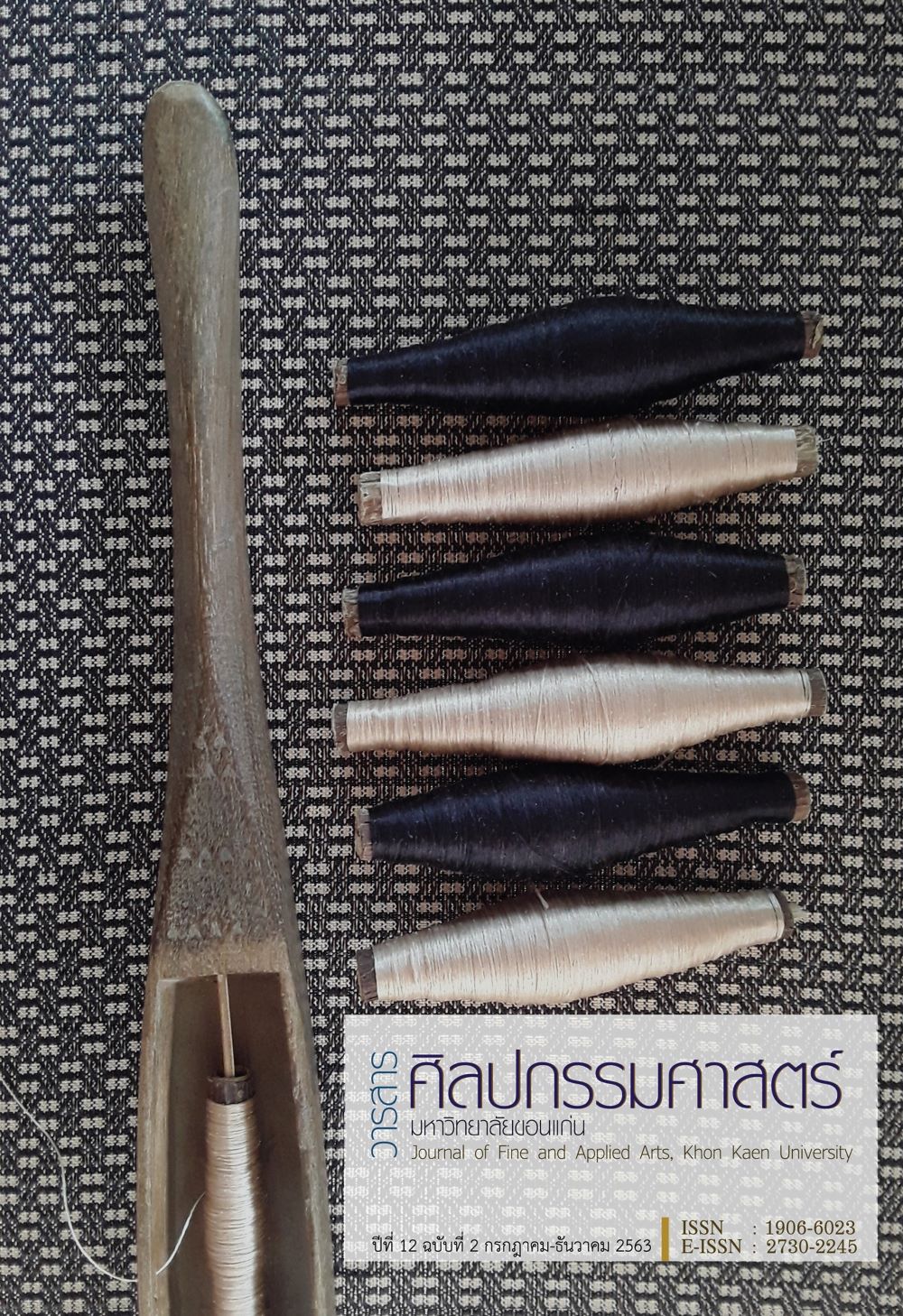Concept and Music Composition for Fingerstyle guitar of Pijak Weerathai
Main Article Content
Abstract
This research article was aimed to study Concept and Song Composition for Fingerstyle guitar of Pijak Weerathai in the album “From the earth to the moon”. This research was qualitative research which was conducted by an interview and analysis song in musicology term. The study results were as follows.
In inspiration concept, the song composition for Figurestyle, the results of this study were: 1) Conceptualizing to express song’s emotion, include playing technique, 2) Song composition based on composer’s imagination and direct concept latter.
An analysis of “Chiang Rai” song, the study was found that the composer got inspiration from the beauty of Doi Mae Salong, Chai Rai province and impressed in nature as well as villager livelihood which integrated traditional style and modern style proportionately, as resulted in the impression to create introduction rhythmic and ending rhythmic with Natural Harmonic and Slide techniques into the playing. The rhythmic transition was played in both step-by-step style, and Non- theoretical style. The rhythmic direction was went up, went down, and stable. The relation of two- the rhythmic direction was divided into 3 patterns; parallel and oppositional, and obliquely pattern.
The song was also used ornament note and duet playing with simple quadruple time in 125 speeds with the Syncopation note in step G major which has not changed between the song. Cord structure is music-theoretical structure, but some part cord path did not rely on theory. The used cord was basic cord and related cords i.e. Seventh Chords, Extended chords, Added tone chords, Slash chord, Secondary dominant, etc. For song pattern, the song pattern was used tri-pattern A B A’. In song sentence, the song consisted of interrogative and affirmative sentences in various patterns; same structure and length, similar structure and length with differences with Cadence or pause phrase 3 types; Perfect Authentic Cadence, Half Cadence, and Deceptive Cadence.
Article Details
Content and information in articles published in the Journal of Fine and Applied Arts of Khon Kaen University is regarded as the opinion and sole responsibility of the author(s) directly; therefore, editors are not obliged to agree to or share any responsibility with regard to the content and information that appears within these articles.
All articles, information, content, image, etc. that have been published in the Journal of Fine and Applied Arts of Khon Kaen University is the copyright of the Journal of Fine and Appllied Arts of Khon Kaen University. Any person or organization who wishes to distribute all or parts of the articles for further dissemination or other usage must first receive permission from the Journal of Fine and Applied Arts of Khon Kaen University before proceeding to do so.
References
ณัชชา พันธุ์เจริญ. (2552). พจนานุกรมศัพท์ดุริยางคศิลป์. กรุงเทพฯ : เกศกะรัต.
ณัชชา พันธุ์เจริญ. (2553). สังคีตลักษณ์และการวิเคราะห์. กรุงเทพฯ : เกศกะรัต.
ราชบัณฑิตยสถาน. (2548). ศัพท์ดนตรีสากล. กรุงเทพฯ : อรุณการพิมพ์.
ราชบัณฑิตยสถาน. (2554). พจนานุกรมฉบับราชบัณฑิตยสถาน. กรุงเทพฯ : นานมีบุคส์พับลิเคชั่นส์.
ลัญฉนะวัต นิมมานรตนกุล. (2551). หลักการประพันธ์เพลง. นนทบุรี : นิมมานรตนกุล.
สุมาลี นิมมานุภาพ. (2543). ดนตรีวิจักษณ์. กรุงเทพฯ : สำนักพิมพ์มหาวิทยาลัยรามคำแหง.
Arnold, D. (1984). The New Oxford companion to music Volume I. London : Oxford University Press.
Broughton, S. (Eds.). (1991). Chinese musical instrument synopsis. Beijing : Music Research Institute of Chinese academy of Arts.
Randel, D. (1986). The New Havard dictionary of music. Cambridge : Havard University Press.
Rowley, G. (Ed.). (1978). The book of music. Chrischurch : Prentic-Hall.
Sachs, C. (1940). The history of musical instruments. New York : W.W. Norton.
Sadie, S. (Ed.). (1980). New Grove dictionary of music and musicians. London : Macmillan Publishers.


